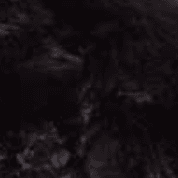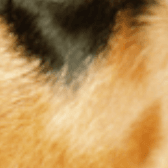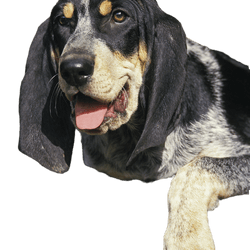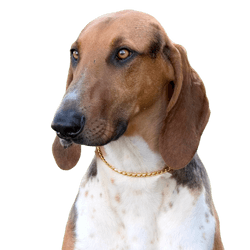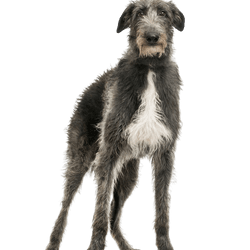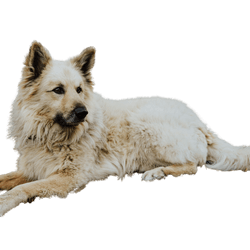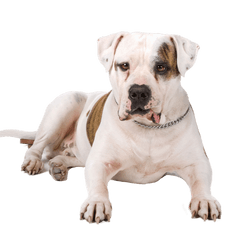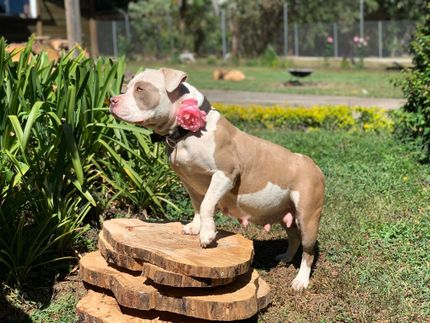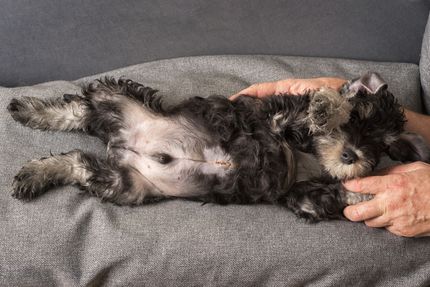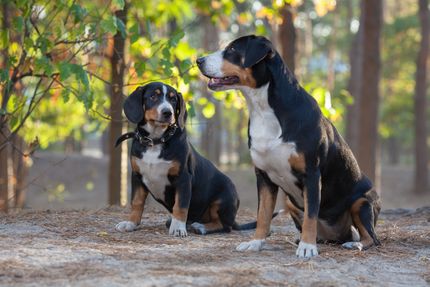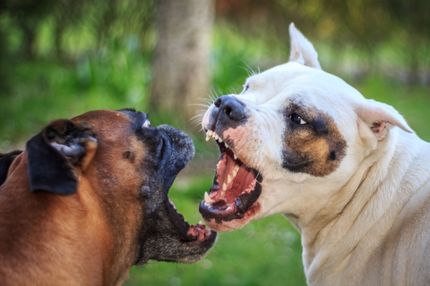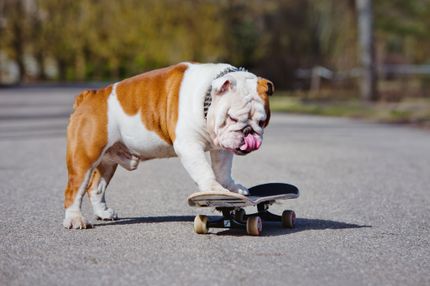Facts & Origin
What is the origin of the Gordon Setter?
Already in the Middle Ages did Setters in Great Britain provide valuable services. At times when rifles were not yet available, they ensured the food supply of their owners as their hunting companions. Partridges, pheasants and quails were caught with nets called tyras back then. The Setter, with its excellent nose, tracked down prey and indicated their find by sitting down (set). The hunters then threw large nets over the birds and caught several at a time using this method. All four Setter species with long fur, including the Irish Setter, the English Setter and the Irish red and white Setter, are descended from these old hunting dogs. The assumption is obvious that they were created by the crossbreeding of Spaniel and Pointer. A comprehensive study carried out by geneticist Heidi Parker in 2017 proves that pointer blood does indeed run through the veins of this breed. Around the year 1810, the 4th Duke of Gordon named Alexander started the targeted breeding of the Gordon Setter in his castle near Fochabers in Banddshire, Scotland. The final differentiation from other long-haired Setters was made in 1873, when the British Kennel Club separated the breeds according to colour. At first they were registered under the name "Black-and-Tan Setter", they only received their present name in 1924.
What are the breed characteristics of the Gordon Setter?
The dynamic and harmonious physique of the Gordon Setter already gives you an idea of what a good runner this dog is. The official breed standard even compares them to a "powerful hunting animal". The topline of the back is horizontal, the tail is either carried straight or sabre shaped in line with the backline or slightly lower.
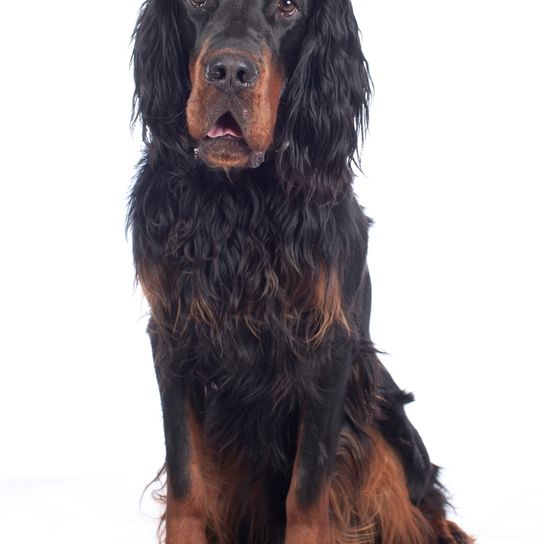
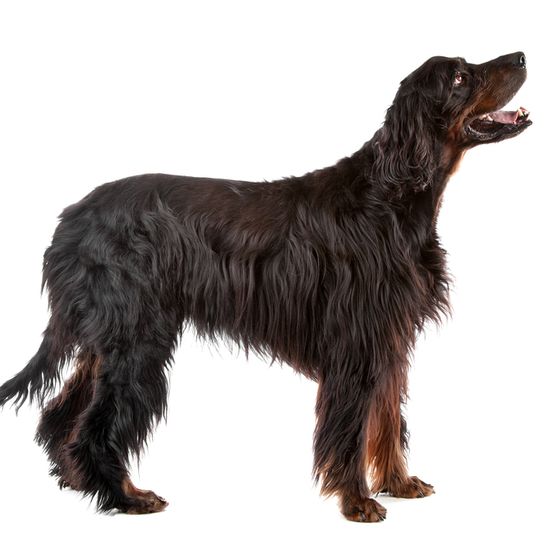
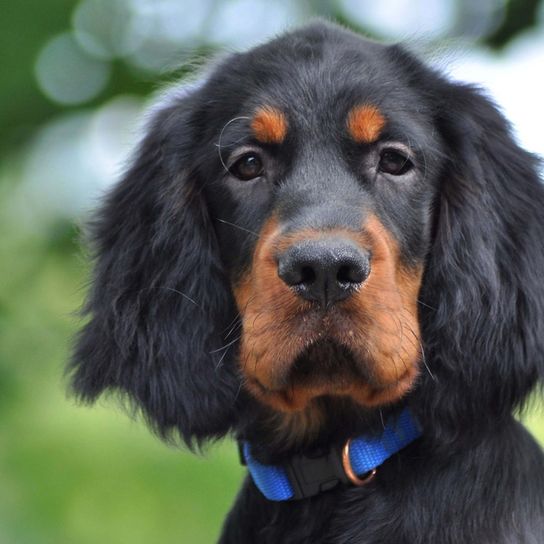
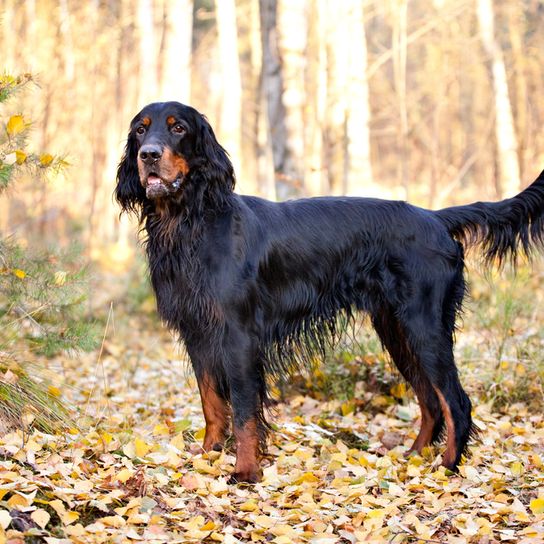
| Alternate Name | - |
| Origin | UK |
| Life expectancy | 10 - 12 years |
| Care requirements | low-maintenance |
| Activity level | average |
| FCI group | British and Irish Pointers and Setters |
| AKC group | Sporting Group |
| KC group | Gundog Group |
Gordon Setter mixes
Attitude, character and temperament of the breed
What are the typical character traits of the Gordon Setter?
If you rescue a Gordon Setter in need, be aware that it is a thoroughbred hunter. For this reason and because of their self-confident nature, the breed is not necessarily suitable for first-time owners. This breed needs clear rules and only subordinates itself if you always stay consistent. If Gordon Setter puppies move into your home, it is best to visit a dog school where you can find specialists for hunting dogs. Without proper training, your four-legged friend will otherwise be over the hills as soon as it spots birds or small game. The active dog wants to go outdoors in all weather conditions.
If he is not being led by a hunter, you can make use of their energy with
- cycling,
- jogging or
- riding out on horseback.
- They also gladly join you doing dog sports and the like to
- retrieve or
- do mantrailing.
If the Gordon Setter is challenged enough, they will be a pleasant house mate. At home, it is grateful for every cuddle and always wants to be close to its family. The child-friendly breed is also suitable for sporty families.
Character
Usage
What are typical diseases of Gordon Setters?
Like other breeds with drooping ears, Gordon Setters are prone to developing ear infections. You can prevent this by using special cleaning agents that remove dirt from the outer ear canal and maintain its cleanliness. Some diseases typical for the breed are:
- Hip joint dysplasia: congenital malposition of the hip joint
- Skin tumours (in older animals)
- Occasionally there is also progressive retina atrophy, a detachment of the retina
- Canine Leukocyte Adhesion Deficiency (CLAD): congenital immune deficiency
What should be considered in regards to Gordon Setter breeding?
A reputable Gordon Setter breeder will provide you with health papers of the parents. Make sure a genetic test has been done for hip dysplasia. At the Austrian Setter Club only breeders are registered who follow the breeding rules for Setters. This includes character tests for the parents and various health checks. Furthermore, you have the opportunity to visit the puppies more often and to get to know your future roommate in peace.

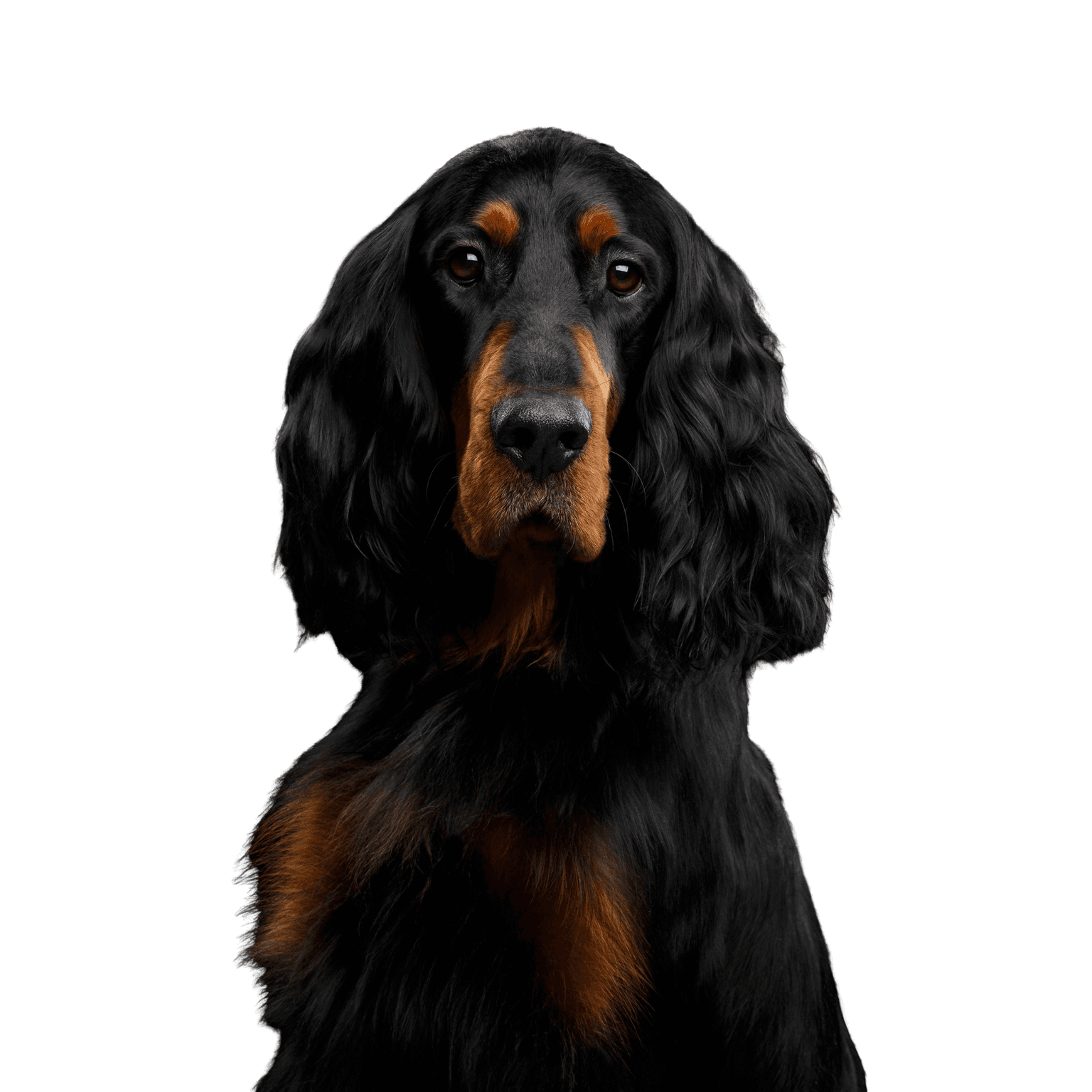
Appearance and coat of the Gordon Setter?
The Gordon Setter's body is covered by a long-haired, smooth coat. Curls or waves are not desirable according to breed standards. On the head as well as on the front of the legs the coat is shorter, long fringes hang down from the belly. The top coat is shiny and black and is loosened by chestnut red markings. Many Gordon Setters carry clearly visible bright spots above the eyes, also spots on the throat, chest and muzzle are desirable. Since branches and leaves often get caught in the coat during excursions into nature, regular brushing pays off. This will also prevent the coat from becoming matted. In addition, the grooming ritual preserves its silky shine.
What size does a Gordon Setter reach?
The maximum withers height is 66 centimetres.
How much does a Gordon Setter weigh?
At 25 to 35 kilograms, it is the heaviest among the rescue dogs.
What is the life expectancy of a Gordon Setter?
A Gordon Setter will live to an age of 11 to 13 years.
| Fur length | medium |
| Fur | wavy |
| Ear shape | Floppy Ear |
| Tail | fanned out |
| Anatomy | strong, sporty |
| Size ♀ | 58 - 66 cm |
| Weight ♀ | 20 - 32 kg |
| Size ♂ | 61 - 69 cm |
| Weight ♂ | 25 - 36 kg |
| Suitable For | - |
Colors
Known Diseases
Eye diseases
Often occur with allergies and intolerances.
Ataxia
Ataxia (from Greek ἀταξία ataxia 'disorder' 'irregularity') is a generic term in medicine for various disorders of movement coordination. Ataxia can occur even when there is no paralysis (paresis), that is, when there is normal muscle strength.





